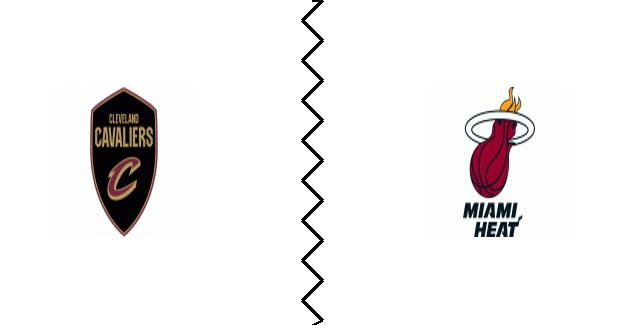2025-04-26 Cleveland at Miami Matchup Preview

This playoff matchup between the Cleveland Cavaliers and Miami Heat promises a clash of styles, with Cleveland's methodical offense facing Miami's stifling defense.


Cleveland Cavaliers Playoff Outlook
The Cleveland Cavaliers enter this playoff matchup as a team built on a foundation of controlled pace and calculated offensive execution, where during the regular season they won 64 games. While their overall pace during the regular season was 99.8 possessions per 48 minutes, they are attempting to slow the pace down and be even more methodical, as evidenced by their focus on limiting turnovers. Their regular season turnover percentage was 11.6 percent, but in the playoffs, the team has managed to trim that number down to just 8.3 percent. This discipline is further highlighted by an assist-to-turnover ratio of 2.6 in the playoffs, a leap from their regular season mark of 2.1. However, the Cavaliers' assist percentage has decreased from 63.1 percent in the regular season to 53.6 percent in the playoffs, indicating a potential shift towards more isolation-based scoring or a tightening of defensive pressure. The Cavs have improved their offensive rebounding percentage in the playoffs, rising from 25.9 percent to 26.7 percent. Cleveland has demonstrated an improved ability to capitalize on free-throw opportunities in the playoffs, increasing their free throw percentage from 77.6 percent to 87.2 percent.
Miami Heat Playoff Outlook
The Miami Heat present a contrasting profile, defined by their defensive tenacity and opportunistic scoring. The Heat's regular season defensive rebounding percentage of 75.9 percent shows a commitment to securing possessions, although it dipped slightly to 73.3 percent in the playoffs. While Miami had a regular season pace of 96.2 possessions per 48 minutes, there hasn't been much of a shift in their playoff pace, implying that they would like to keep it in that area. The Heat are willing to concede offensive rebounds, and have an offensive rebounding percentage of 26.3 percent in the playoffs. A crucial aspect of Miami's offensive approach is their three-point shooting ability, where the Heat have improved their three-point percentage in the playoffs, rising from 36.7 percent to 38.2 percent.
Defensive Matchup
The Cavaliers' defense presents a formidable challenge, with a regular season opponent turnover percentage of 12.4 percent, indicating a knack for forcing errors, and it has only decreased to 14.3 percent in the playoffs. The Heat showcase a slightly improved ability to take care of the ball, as their turnover percentage in the playoffs is at 13.9 percent, which is down from 12.4 percent in the regular season. Miami's ability to generate steals might be somewhat stifled against the Cavaliers, given Cleveland's playoff opponent steal percentage of only 4.5 percent. Cleveland will have to contend with Miami's three-point shooting, as opponents only hit 35.9 percent of their shots from behind the arc in the regular season, and 38.2 percent in the playoffs. The Heat have allowed opponents to shoot 45.5 percent from three in the playoffs, but in the regular season, they were able to lower that down to 36 percent. The Heat's defensive strategy is characterized by a commitment to contesting shots and disrupting passing lanes, hoping to suffocate Cleveland's offensive flow. Cleveland has also demonstrated an ability to defend without fouling, as their opponent free throw percentage was 77.9 percent in the regular season, and 75 percent in the playoffs.
Offensive Styles
Cleveland's offensive footprint indicates a series-oriented approach, where they have a set motion to get into their half-court sets, and try to methodically break down their opponents. They rely heavily on ball movement and player movement, trying to attack openings and generate opportunities. Miami runs more of a swing offense, where they are trying to get the ball to certain areas of the court to allow their players to exploit matchups. The Heat seek to exploit defensive mismatches through constant motion and precise passing, and try to make the defense pay if they are slow to react.
Defensive Styles
The Cavaliers deploy a pack line defense, where they are trying to force their opponents into the paint, while providing help defense. The Heat's defensive footprint points towards a man-to-man scheme with occasional zone looks, prioritizing individual matchups while remaining adaptable to offensive strategies.
Prediction
Given Cleveland's efficiency in protecting the ball and their ability to generate offensive rebounds, they should be able to control the pace of the game, which will lead to more scoring opportunities for them in the half-court. Miami's defensive tenacity will keep them within striking distance, but the Cavaliers' disciplined offense and commitment to limiting turnovers will ultimately prevail in a close contest.
Predicted Score: Cleveland 107, Miami 105